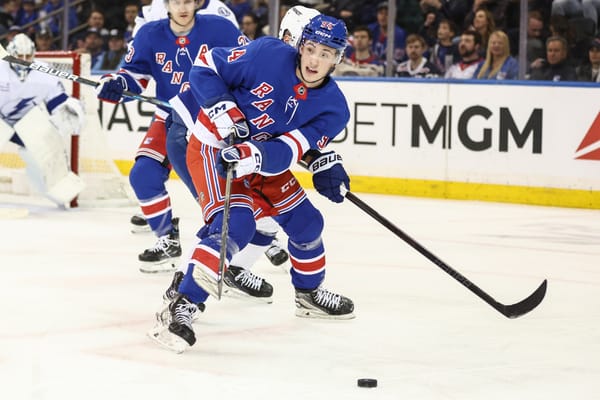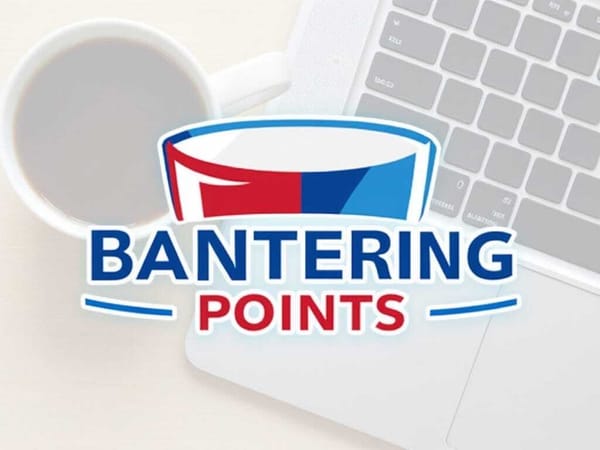Rangers Should Prioritize A 2018 Stanley Cup Run
A hockey general manager needs to think like a poker player. He needs to think beyond the scope of the hand in front of him. Any hand can win, but which hands and what scenarios are really worth risking a sizable bet? Can he afford it at this time, or will he regret it if he doesn’t have those chips when a better hand comes around? How sure is he a better hand will come around anytime soon?
Concerning win-now investments, there have been moments where the Rangers struck at exactly the right time. The moves for Rick Nash in 2012 and for Martin St. Louis in 2014 were well-timed gambles. There have been times where they recklessly invested in a bad hand, such as last winter’s Eric Staal trade. The Rangers are a better team this season, and I bet General Manager Jeff Gorton wishes he kept the two second-round picks and Aleksi Saarela around for a meaningful move (Shattenkirk?) this trading deadline. In the next 30-or-so hours, Gorton needs to take a hard look at what the Rangers are, what the other teams in his way look like, and how much he really can afford to invest in this season.
The Rangers are currently in a precarious spot. They are certainly a good team, and one that is better than the many teams simply hoping to earn a playoff berth. However, it’s a considerable stretch to group them with the top contenders. With their four-line prowess, an in-tune Henrik Lundqvist, and some puck luck, they could absolutely upset Washington and/or Pittsburgh, plus whoever were to emerge from the West. In a theoretical situation where the Rangers have a wealth of prospects and draft picks at their disposal, making some deadline noise and taking a moderate gamble on the team clicking at the right time would be close to a no-brainer.
That’s not where the Rangers stand, however. The prospect pool is depleted and there’s a limited cache of draft picks to speak of. The Rangers have little beyond the bare essentials, and any investment made now is going to severely hinder their flexibility and opportunities in future seasons. Instead, I am of the opinion that the Rangers’ focus should be on organizing and optimizing for a 2018 Stanley Cup run.
The only meaningful player due for a raise this upcoming summer is Mika Zibanejad. Jesper Fast and Oscar Lindberg are also restricted free agents, but won’t require particularly heavy salaries (assuming both even stay, which one might not due to the expansion draft). Every single roster player is under team control, and thus is not a risk to leave via free agency.
There may have to be a few salary cap sacrifices to fund Zibanejad’s extension as well as other necessary improvements, but that’s almost a blessing in itself. If not on their own volition, the Rangers will be forced by circumstance to rip up the foundation of an impotent yet expensive defensive corps. A depth forward or two might be require sacrificing as well, but frugal replacements are relatively easy to find every summer in free agency or through internal promotion. Only Rick Nash is at legitimate risk of becoming a regrettable departure, but one would hope collective improvement from the team’s extremely young group of talented forwards could compensate. Overall, the structural integrity of the team should remain intact, with most turnover being in places that need it, anyway.
If 2017-2018 is the priority, then there’s no reason to not start cashing in on non-essentials now. With so many teams still in the playoff race, the market is heavily slanted towards sellers. Patrick Kearns wrote a convincing piece at Sports Illustrated on the merits of trading Michael Grabner. Grabner’s 19.4% shooting percentage is way above his career norm and is almost certainly unrepeatable. He has a year left on his contract and turns 30 in October. He will continue to be a good player, but will probably never repeat his performance through 61 games with the Rangers. His peak value is now, and it’s an ideal environment for auctioning quality depth forwards. Brian Boyle brought Tampa Bay a second-round pick. Patrick Eaves netted Dallas a conditional first. Alex Burrows returned a B+ caliber prospect. Grabner would be worth at least that, and maybe even more given recent production. The Rangers would miss him, but would they miss him enough to pass up on that kind of return?
Defensemen Nick Holden and Kevin Klein are also exploitable exports. Like Grabner, Holden is riding an unprecedented and probably unsustainable run of scoring. Kevin Klein was in that same exact situation a year ago, and now is steeply declining. However, name-brand recognition tends to go a long way for defensemen, and Klein certainly has the reputation of a reliable veteran with playoff experience. There are a lot of teams desperate to add to their blue-lines with little supply available. Ron Hainsey went to Pittsburgh for a second-rounder. Calgary sent 3rd- and 5th-round picks to Arizona for the unheralded Michael Stone. Holden or Klein would very likely bring in a second-round pick, and maybe more. In fact, why not trade both and then acquire a defenseman from the bargain bin who fits expansion draft requirements?
Here is the kicker: Sub in Pavel Buchnevich for Grabner and Adam Clendening for Holden/Klein. Are the Rangers meaningfully worse off for this season? Are they not still an offensively-gifted, Lundqvist-backed team with enough firepower to surprise the Penguins and Capitals? Is the nuance really worth passing on a bounty of draft picks?
By keeping picks and prospects and trading non-vital parts, the Rangers would maintain and replenish their pool of trade assets. Add in a potential return on Rick Nash during the offseason, and the Rangers would have serious ammunition with which to work. They will presumably have gutted much of the defense and will have the means to fill and upgrade the weak spots. Assuming Henrik Lundqvist isn’t a harsh victim to age, and with the team’s rock-solid group of young talent taking on bigger roles, the 2017-2018 Rangers would be a truly dangerous team with the means to go all-in on a Stanley Cup run.




